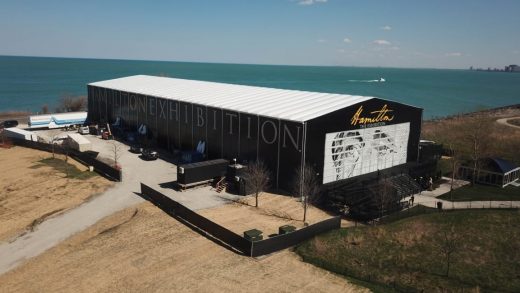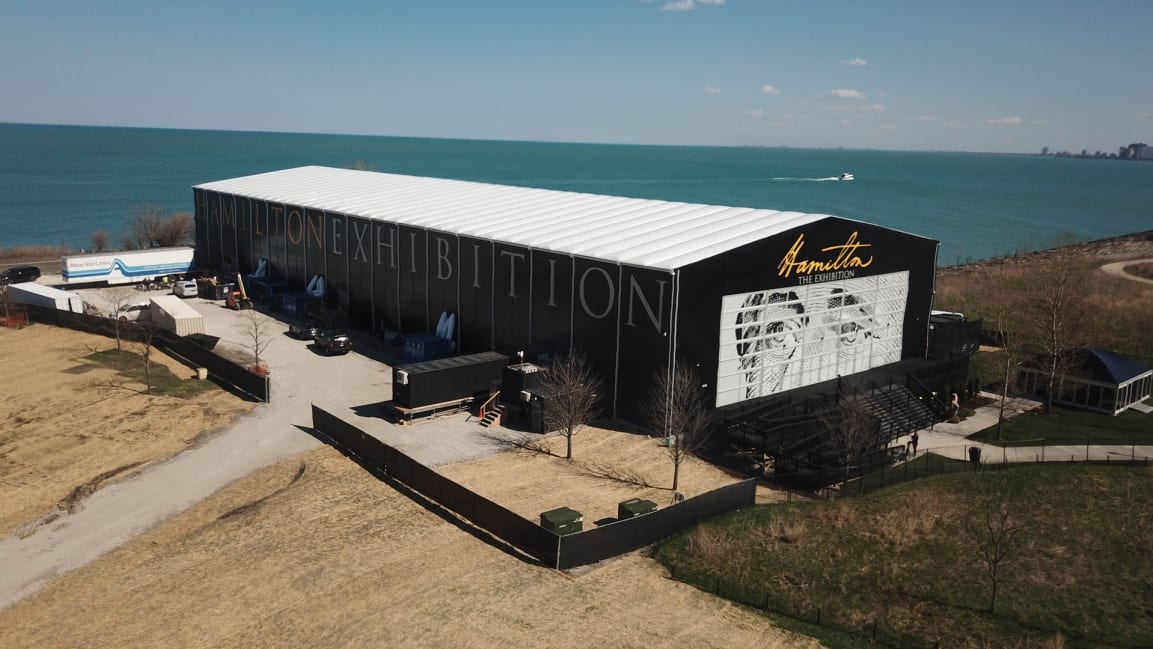Hamilton got a few things wrong. This traveling museum corrects the record
There’s a powerful scene in the second act of Hamilton in which Aaron Burr is left seething in resentment after Alexander Hamilton refuses to endorse him in the election of 1800, a political slight that ensures Thomas Jefferson’s ascendancy as America’s third president. For Burr, losing the White House is one humiliation too many, the last straw in a lifelong rivalry with Hamilton that he can no longer bear. In response, he challenges Hamilton to a duel.
It’s a great scene—dramatic, Shakespearean—one that serves as a perfect apogee to the musical’s revenge-driven subplot. The only problem is it didn’t happen that way. In reality, it was Burr’s failed bid to become governor of New York, almost four years later, that preceded the final showdown between the two men.
Of course, when you’re making a masterpiece like Hamilton, you can’t be too bogged down by pesky facts. “Through compression, we had to take a whole bunch of swaths of history and distill it down and crystalize it for a 241-minute piece of theater,” admits scenic designer David Korins. “The show kind of makes it look like our country was founded by five people.”
Now Korins and some of his Hamilton collaborators, including creator Lin-Manuel Miranda, have found a way to go “deeper and wider” into America’s origin story—this time sticking to what really happened. Korins is the creative director of Hamilton: The Exhibition, an ambitious new experiential museum that uses a mix of music, sound effects, lighting, historical artifacts, sculpture, and narrative storytelling to re-create the world of Alexander Hamilton and America’s founders.
Korins describes it as early America “fully rendered in three dimensions,” an immersive succession of 360-degree galleries that take you through Hamilton’s life from his early days in St. Croix to the fateful duel at Weehawken, New Jersey.
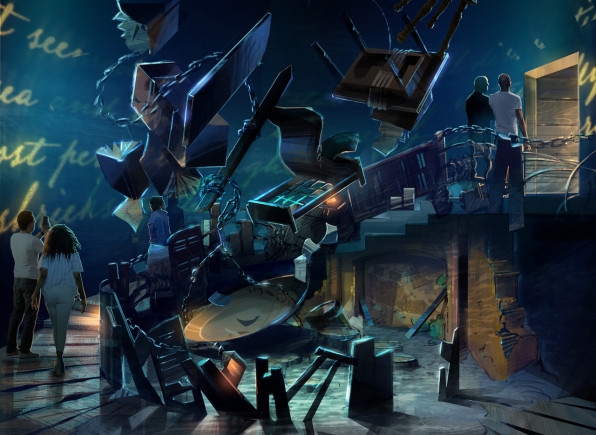
The exhibition opened to the public on Saturday, housed in a freestanding structure on Chicago’s Northerly island about the size of a football field. “It’s basically an airplane hanger,” Korins says, his eyes lighting up as he describes what the massive Hamilton-branded exhibition space looks like from the road leading up to it. “It’s very rare that you ever see something of that scale and magnitude by itself.”
History is happening
I spoke with Korins about the exhibition earlier this month in his midtown Manhattan studio, while he was in between trips to Chicago. He said the project originated through conversations with historians who were simultaneously elated that Hamilton the Broadway show was generating so much interest in American history but also concerned that many fans were viewing the show as historical gospel.
“They were thrilled that these things were being theatricalized, but it was also like—’Hey, you know, Eliza and Alexander had eight children, not one,’” Korins says. “What about the fact that they didn’t all meet at Fraunces Tavern in one night? What about these conversations?”
Such is the burden of artists who mine history for drama. Miranda famously drew inspiration from Ron Chernow’s biography of Alexander Hamilton, and while the show is impressively faithful to the basics—and Miranda’s hip-hop lyrics are a delightful teaching tool in a Schoolhouse Rock kind of way—Hamilton also contains a fair amount of dramatic license. That might have not have mattered had it not turned into a cultural phenomenon, but the bigger something gets, the more of a target it becomes.
“Lin was getting tweeted at,” Korins recalls. “‘How come you’re not talking about John Laurens’s birthday? Or how come you’re not talking about Eliza and Hamilton’s anniversary?’”
Miranda and his fellow collaborators took those criticisms to heart, so they sought out a solution from deep within the rigors of academia. For the exhibition, they enlisted the help of two renowned historians: Joanne Freeman, a Yale University professor and one of the world’s most foremost Hamiltonian researchers, and Annette Gordon-Reed, a Harvard Law School professor known for her scholarship on Thomas Jefferson.
Freeman, in particular, was instrumental to the museum’s creation, Korins says, vetting the process and being the “adult in the room” who made sure all the information passed historical muster. The exhibition includes an audio tour narrated by Miranda, along with two other members of the original cast—Phillipa Soo and Christopher Jackson—and Freeman also vetted those scripts for accuracy.
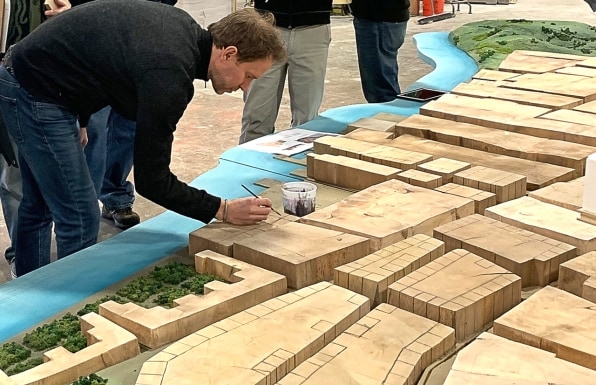
Hamilton has sometimes been criticized for presenting what critics see as a sanitized view of America’s uglier roots. To its detractors, it’s an example of “Founders Chic,” the phenomenon by which history is distorted (some would say candy coated) through blind reverence for the Founding Fathers.
While Korins doesn’t claim the exhibition is a perfect record of history, he says it doesn’t shy away from, for instance, Hamilton’s relationship with slavery, or the limited agency of women in the 18th century. “We can’t pretend that the country wasn’t founded by a bunch of old white privileged people,” he says. “That, for sure, is a thing that exists.”
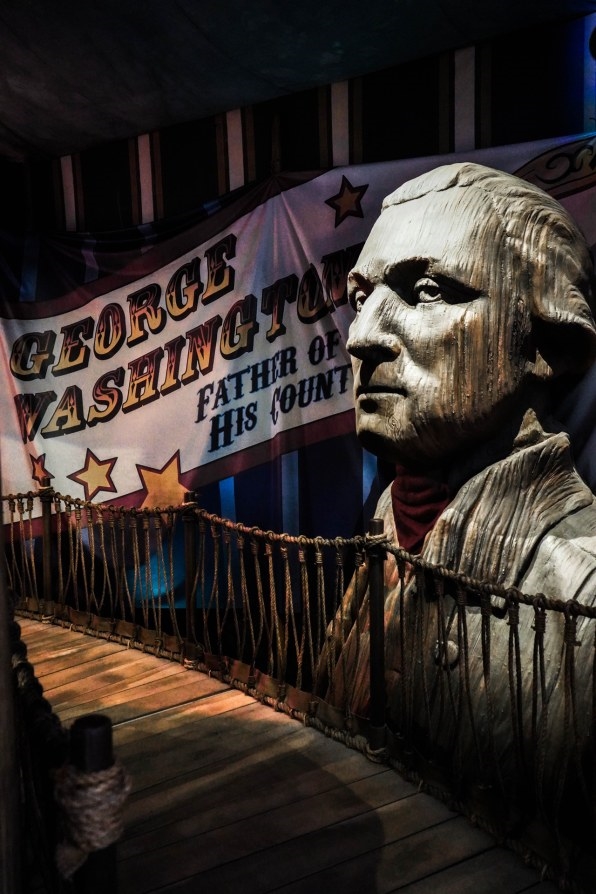
At the same time, he says it’s “not an institution to right the wrongs of the show” but rather an opportunity to give anyone with an interest in America’s founding to use the portal of Hamilton the intellectual property to learn more about the historical figure.
Korins, who has been with Hamilton since its days at off-Broadway’s Public Theater, has developed a reputation as a versatile artisan who embraces technically demanding projects, like Dear Evan Hansen, with its video projections and multimedia sets, or Grease: Live, Fox’s televised staging of the musical classic.
The Hamilton exhibition will remain at its Chicago location for an open-ended period of time before transferring to other yet-to-be-named cities. One of the reasons the creators picked Chicago for the first stop was because the musical is playing there, too, which is a nice tie-in. And at $39.50 a ticket, a day at the museum is considerably cheaper than the show itself, although Korins says the word “museum” doesn’t do it justice.
“I think ‘museum’ in quotation marks implies boring,” he says. “There’s a new level of engagement here. We’re the Venn diagram of entertainment, immersion, environment, and museum fact and rigor combined.”
(43)

